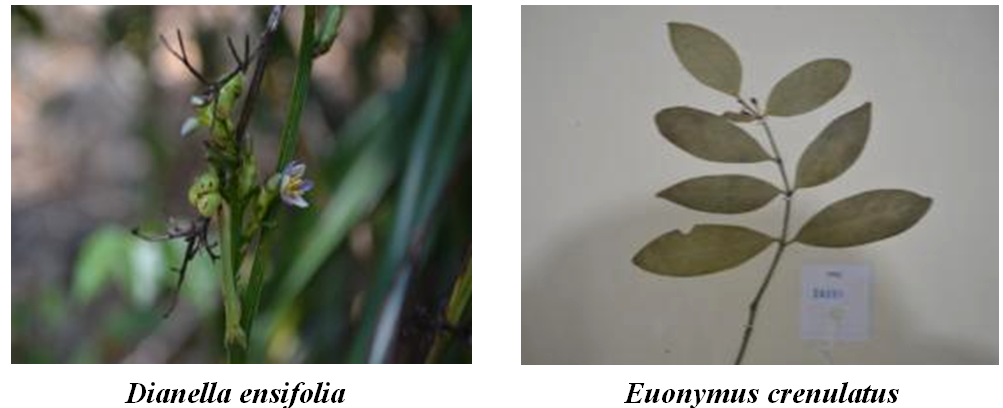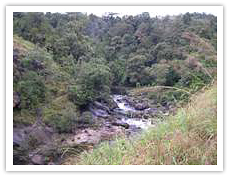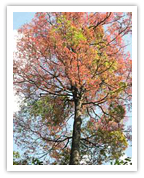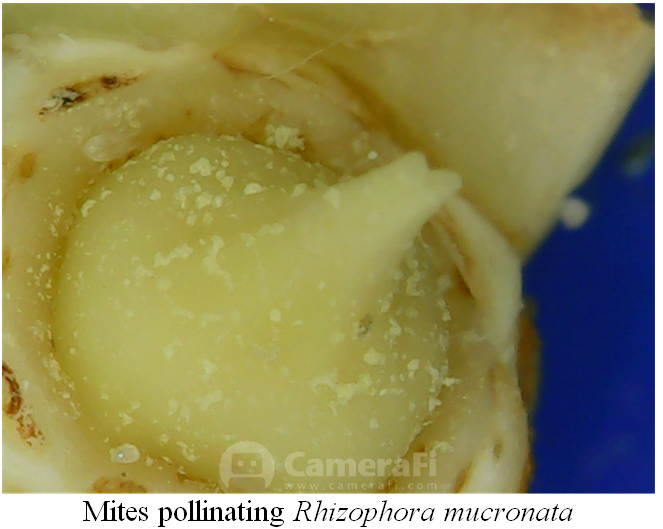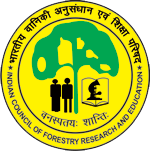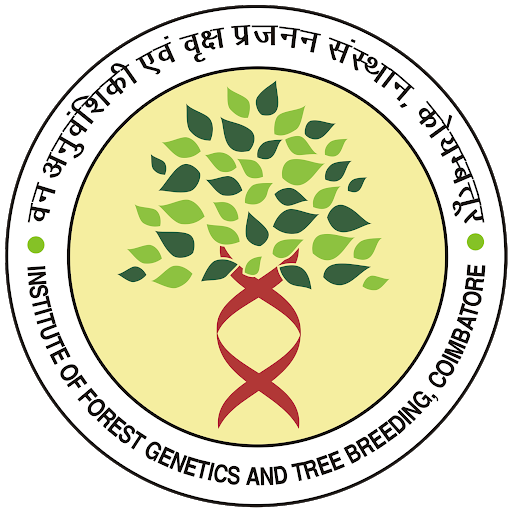|
1. Plant Diversity Assessment and Documentation
|
- Under the project “Plant Diversity of Silent Valley” (sponsored by the Kerala Forest Department), more than 1850 plant species were comprehensively documented and identified, of which 30 species were endemic to the Western Ghats, 22 taxa ornamental potential, 14 species were recorded as wild edible genetic resource and 30 species were red-listed under different threat categories of IUCN from southern Western Ghats.
|
- Documentation of the floral diversity in the buffer zone of Silent Valley National Park (about 40 locations) was carried out and enumerated 1077 plant species including two subspecies and two varieties from 141 families together with two gymnosperms from 671 genera.
|
- Two new reports to the flora of Palakkad District, Kerala were documented: Dianella ensifolia (L.) Redoutè and Euonymus crenulatus Wall. ex Wight & Arn.
|
- Phytodiversity survey and documentation in and around Singanallur Lake, Coimbatore was under taken and recorded 453 plant species.
|
- The floristic Diversity of Sacred Groves in Alappuzha District, Kerala was documented.
|
|
Assessment of Natural Regeneration
|
- The studies on natural regeneration in Silent Valley National Park have shown that several important tree species regenerate well in grassland habitats. These species include Careya arborea, Dalbergia lanceolaria, Elaeocarpus serratus, Glochidion arboreum, Maxtixia arborea, Neolitsea scrobiculata, Phyllanthus emblica, Symplocos cochinchinensis, Syzygium cumini, Wendlandia thyrsoidea, and Ziziphus rugosa.
|
- Studies on the regeneration potential of native flora in Acacia auriculiformis plantations was carried out across 110 sites at Kerala and recorded 88 regenerating native species.
|
|
2. Mangrove Conservation
|
- A full-sib progeny trial with about 350 seedlings of Rhizophora was established at Pichavaram Reserved Forest, Tamil Nadu.
|
- Rhizophora mangrove plantation trials established at the Killai Forest Reserve were handed over to the Tamil Nadu Forest Department for wider replication.
|
- Automated Mangrove Incubation Nursery Technology (AMINT), designed to regulate water quality and nutrient supply for Rhizophora propagation, has been standardized and successfully transferred to the Tamil Nadu Forest Department for propagation of Rhizophora mangroves.
|
- For the first time, mites were identified as one of the legitimate pollinators of mangrove species, Rhizophora mucronata. .
|
- Comparative studies on Rhizophora apiculata, R. mucronata, and their hybrid (R. × annamalayana) revealed that the hybrid is having morphological superiority, higher chlorophyll content and biomass etc.
|
|
3. Species Recovery Research on Threatened Plants
|
- Undertook Species Recovery Research on 21 threatened species of medicinal plants in Silent Valley and Kolli Hills Medicinal Plant Conservation Areas (MPCA) of Kerala and Tamil Nadu in collaboration with State Forest Department of Kerala and Tamil Nadu and Foundation for Revitalization of Rural Health Traditions (FRLHT), Bangalore.
|
- Out of the 25 plant species prioritised for conservation in Tamil Nadu, the population status of 8 plant species prioritised for conservation in Tamil Nadu viz., Dipterocarpus bourdillonii, Phyllanthus anamalayanus, Melicope indica, Antistrophe serratifolia, Psychotria anamallayana, Actinodaphne lawsonii, Vernonia shevaroyensis and Elaecarpus blascoi has been assessed in various forest areas like Anamalai Tiger Reserve, Nilgiri Biosphere Reserve, Kodaikanal Wildlife Sanctuary and Eastern Ghats in collaboration with TBGPCCR and TNFD.
|
- The population status of 17 plant species prioritised for conservation in Tamil Nadu is being assessed. The species include Agasthiyamalaia pauciflora, Coscinium fenestratum, Cryptocarya anamalayana, Drypetes porteri, Dysoxylum malabaricum, Elaeocarpus gaussenii, Eugenia singampattiana, Garcinia travancorica, Hopea utilis, Humboldtia bourdillonii, Humboldtia unijuga var. trijuga, Hydnocarpus macrocarpus, Myristica malabarica, Ochreinauclea missionis, Palaquium bourdillonii, Popowia beddomeana and Syzygium rama-varma.
|
|
4. Management of Invasive Alien Plant Species
|
- The spatial extent of selected Invasive Alien Plant Species was mapped using satellite images and Species Distribution Model (SDM).
|
- Successfully mapped P. juliflora in Tamil Nadu using satellite imagery and Random Forest algorithm, achieving 75-89% classification accuracy.
|
- Spatial mapping of wattle (Acacia mearnsii) invasion in shola–grassland ecosystems of Palni, Nilgiris at Tamil Nadu and Idukki district, Kerala revealed increasing invasion at shola forests with a reduction in grassland extent.
|
- Documented effects of P. juliflora, Mikania micrantha and Lantana camara on soil properties and native plants was assessed in selected areas of Tamil Nadu and Kerala.
|
- Characterized Acacia mearnsii bark's phytochemical composition through GC-MS and HPLC analysis and Quantified tannin content (0.04731%) and extracted natural dye from the bark samples
|
|
5. Plantation Resource Assessment
|
- Spatial extent of Casuarina and Eucalyptus plantations was mapped in selected districts of Tamil Nadu, namely Ariyalur, Karur, Pudukkottai, Sivagangai, Cuddalore, and Villupuram districts etc.
|
- Pudukkottai District had the largest eucalyptus plantations, with areas expanding from 28,418.86 ha (2013–2014) to 38,191.67 ha (2016–2017).
|
- The district Villupuram District had the largest Casuarina plantations, with 15,076.21 ha (2013–2014) expanding to 20,420.37 ha (2016–2017).
|
|
6. Impact of Climate Change on Phenological responses and distribution
|
- Vulnerable habitats for Acacia mearnsii, MIkania micrantha and Prosopis juliflora in future climate change scenario were identified and mapped using the MAXENT Species Distribution Model (SDM).
|
- Phenological responses of Teak (Tectona grandis) to changing climate at Parambikulam Wildlife Sanctuary, Kerala were assessed using Moderate Resolution Imaging Spectro-radiometer (MODIS) satellite images of 19 years (2001 to 2020). The analysis showed that the number of growing days has changed in different years which need to be correlated with temperature and rainfall data.
|
- To monitor and understand the impacts of climate change on Indian forest ecosystems, two permanent Long-Term Ecological Monitoring (LTEM) research plots have been established at: Bonacaud, Agasthiyamalai Biosphere Reserve, Thiruvananthapuram, Kerala (10 ha) and Pichavaram Mangrove Plot, Tamil Nadu (1 ha).
|
|
7. Ecotourism and Socioeconomic Studies
|
- Visitor Carrying Capacity (VCC) was assessed for selected ecotourism sites of Kerala with the support of Kerala forests and wildlife Department.
|
- The baseline survey for implementation of ecotourism activities in ten selected villages of Tamil Nadu was carried out with the support of Tamil Nadu Biodiversity Conservation and Greening Project for Climate Change Response (TBGPCCR).
|
|
8. Tree Improvement
|
- Selections of Eucalyptus tereticornis × E. grandis and E. tereticornis × E. urophylla from controlled cross full sib family were evaluated for veneer production. Messrs. Ambiply Industries, Mettupalayam, Coimbatore district evaluated the selections and reported that the selections yielded over 80-85% of core veneer and face veneer which will be highly useful for commercial plywood making industries.
|
- Phenotypically superior trees (92 Nos) of Dalbergia were selected from 11 forest divisions of Tamil Nadu and Kerala for clonal trials at Varavoor area of Thrissur Forest Division, Kerala. Various PCR protocols were analyzed, and standardized the PCR methods to get a high polymorphism. Among the 17 primers screened, 6 primers gave variation. Among the 6 RAPD primers, 2 have given 70% polymorphism.
|
- Candidate Plus Trees (50) of Acacia nilotica were selected from 30 districts, across five agro-climatic zones of Tamil Nadu, and all the CPTs were assembled as genetic resource and progeny trials were established.
|
- Phenotypically superior trees (40 nos) of Swietenia macrophylla were selected from 25 populations in Tamil Nadu and Kerala, and progeny trials were established at Gudalur, Maraimalainar Field Research Station, Chennai for further research studies.
|
|
9. Extension Activities:
|
|
a. Training on “Biological Diversity Act, 2002“, for officials of various line departments and education institutes of Tamil Nadu and Kerala, sponsored by the National Biodiversity Authority (NBA), Chennai was conducted in the years 2017, 2018,2019, 2020.
|
|
b. Celebration of Kedharnath Memorial Lecture (KML) is being organized regularly every year.
|
|
c. International Mangrove Conservation Day (IMCD-21, 22, 23) at Pitchavaram field station was celebrated to create awareness of the significance of the ecosystem and to promote solutions for their sustainable management, conservation and uses. About 150 participants attended the program from different parts of the country through virtual and offline mode.
|
|
d. Training course on “Prevention, control and management of invasive alien species“ for Indian Forest Service Officers ranking from APCCF to DCF, a total of 32 IFS officers from different states participated in the training, sponsored by the Ministry of Environment, Forest and Climate Change, Govt. of India, New Delhi 05-06th August, 2021.
|
|
e. Capacity Building Training on REDD+ Action Plan for Officers of Tamil Nadu State Forest Department for under CAMPA funded ICFRE Scheme on 6-7th January, 2022.
|
|
f. Capacity Building Training on REDD+ mechanism for Officers of State Forest Department, Andaman under CAMPA funded ICFRE Scheme on 17-18 February 2021.
|
|
g. Capacity Building Training on REDD+ Action Plan for Officers of Kerala State Forest Department for under CAMPA funded ICFRE Scheme on 15-16 March 2021.
|
|
h. Organized internship training on “Remote Sensing and GIS” for college students during the year 2023.
|
|
i. Conservation Assessment, Management and Prioritization Workshop for Threatened Plants of Tamil Nadu organized by ICFRE-IFGTB collaboration with TBGPCCR on 26-27 September 2023.
|
|
j. ICFRE-IFGTB celebrated the World Environment Day 2023 by organizing a tree sapling planting programme in Singanallur lake organized by IFGTB/CUBE/IOCL attended by the school students.
|
|
k. Conducted Capacity Building Training Programme to the frontline field staffs of Tamil Nadu Forest Department on Population Assessment of Prioritized Endemic Plants of Tamil Nadu for Conservation Measures at Attakatty, Coimbatore District during April 2025.
|
|
l. Regional Training on ‘Sustainable Land Management Practices for Reclamation of Problematic Soils and Coastal Ecosystem Management’ during 06-08th August, 2025
|

